A Journey Through Time: The History of Astronomy
Embark on a captivating exploration of the history of astronomy, spanning ancient civilizations to modern discoveries. From the early observations of Mesopotamia to the groundbreaking theories of Greek astronomers, this article will delve into the revolutionary contributions made by individuals throughout history. We will uncover the scientific advancements during the medieval and Renaissance periods, as well as the pivotal moments of the scientific revolution that shaped modern astronomy. Additionally, we will examine the contemporary discoveries and technological advancements that have expanded our understanding of the cosmos. Join us on this mesmerizing journey through time, as we unravel the mysteries of the universe and the remarkable individuals who paved the way for our current understanding of astronomy.
Contents
- Astronomy in Ancient Civilizations
- Revolutionary Contributions by Greek Astronomers
- Medieval and Renaissance Developments
- The Scientific Revolution and Modern Astronomy
- Contemporary Discoveries and Technological Advancements
- Conclusion
-
Frequently Asked Questions
- 1. How did ancient civilizations track the movements of celestial objects?
- 2. Why was astronomy closely linked with religion in Ancient Egypt?
- 3. How did the Mayans make advanced astronomical calculations?
- 4. Who proposed the geocentric model of the universe?
- 5. What was the heliocentric theory proposed by Aristarchus of Samos?
- 6. What were Hipparchus’s contributions to astronomy?
- 7. What advancements in observational astronomy were made during the Islamic Golden Age?
- 8. How did Nicolaus Copernicus popularize the heliocentric model?
- 9. What were Johannes Kepler’s laws of planetary motion?
- 10. How did Galileo Galilei’s telescope discoveries conflict with the Church?
- References
-
Frequently Asked Questions
- 1. Can astrology be considered a part of ancient astronomy?
- 2. What were the main contributions of the Mesopotamians to astronomy?
- 3. How did ancient Egyptians link astronomy to their religion?
- 4. What were the Mayans known for in terms of astronomical calculations?
- 5. How did Claudius Ptolemy contribute to astronomy?
- 6. What was Aristarchus of Samos’ groundbreaking theory?
- 7. How did Johannes Kepler contribute to our understanding of planetary motion?
- 8. What were Galileo Galilei’s significant telescope discoveries?
- 9. How did Isaac Newton revolutionize our understanding of gravity?
- 10. What did the Hubble Space Telescope uncover about the universe?
- References
- Read More
Astronomy in Ancient Civilizations
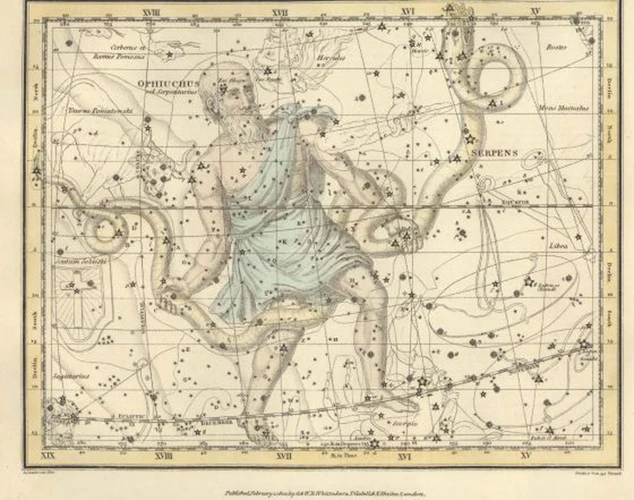
Ancient civilizations had a deep connection with the celestial bodies, and their observations and interpretations of the night sky laid the foundations of astronomy. In Mesopotamia, the birthplace of astronomy, ancient astronomers meticulously tracked the movements of celestial objects, recording their positions and predicting celestial events. They developed early forms of calendars, which helped them in agricultural planning and religious rituals. In Ancient Egypt, astronomy was intertwined with religion, as they believed that the gods and the afterlife were closely linked with the stars and planets. The alignment of the pyramids served as a testament to their celestial knowledge and reverence. The Mayans, with their advanced mathematical and astronomical skills, were able to calculate celestial events with remarkable precision. Their astronomical observations were crucial for agricultural planning, religious ceremonies, and predicting eclipses. The knowledge acquired by these ancient civilizations laid the groundwork for the astronomical advancements that would follow. [Link: /understanding-ophiuchus-characteristics-traits-personality/]
1. Mesopotamia: Birthplace of Astronomy
Mesopotamia, known as the birthplace of astronomy, played a significant role in the development of this ancient science. The Mesopotamians, who resided in the fertile lands between the Tigris and Euphrates rivers (in modern-day Iraq), possessed an innate curiosity about the night sky. They observed the movements of celestial bodies meticulously and recorded their findings on clay tablets. One of their most notable achievements was the creation of an early form of astronomy known as astrolatry, which involved linking celestial events to significant religious and earthly events. The Mesopotamians developed an early calendar system based on the movement of the moon, allowing them to predict the changing seasons and plan agricultural activities accordingly. Additionally, they documented the movements of planets, such as Venus, Mars, Jupiter, and Saturn, and recognized them as distinct from the fixed stars. Their observations of these celestial bodies contributed to the formulation of the first astrological systems and the understanding of planetary motion. The Mesopotamians’ dedication to studying the heavens laid the foundation for subsequent civilizations to build upon, and their advancements in astronomy were essential in shaping our understanding of the universe. [Link: /essential-oils-stress-relief-ophiuchus-sign/]
2. Ancient Egypt: Linking Astronomy to Religion
In Ancient Egypt, the study of astronomy was closely intertwined with religion. The Egyptians believed that the movements of the stars and planets were not just celestial occurrences, but also had significant spiritual and divine implications. One of the most prominent examples of this connection was the alignment of the pyramids with celestial bodies. The Great Pyramid of Giza, for instance, is aligned with an incredible accuracy to the north and centered on the Pole Star. This alignment was believed to symbolize the connection between the Pharaoh’s soul and the afterlife, as the Pole Star was associated with the god Osiris, who governed the realm of the dead. The Nile floodings, which were crucial for the agricultural prosperity of the kingdom, were also linked to the movements of the stars, particularly the heliacal rising of Sirius, the brightest star in the night sky. The appearance of Sirius before dawn heralded the imminent flooding of the Nile, and this event was celebrated as a divine intervention from the goddess Isis. The Egyptians developed intricate calendars to track the movements of celestial bodies, align their rituals and festivals with significant astronomical events, and ensure the harmony between the earthly and divine realms. The celestial observations conducted by the ancient Egyptians were not only scientific but also deeply spiritual, reflecting their belief in the profound influence of the cosmos on human existence. [Link: /writing-prompts-ophiuchus-writers/]
3. Mayans: Advanced Astronomical Calculations
The Mayans, known for their sophisticated mathematical and astronomical achievements, made significant contributions to the field of astronomy. Their advanced understanding of celestial movements allowed them to make precise astronomical calculations. The Mayans developed intricate calendars that accurately predicted celestial events such as eclipses, equinoxes, and solstices. Their calendar system consisted of multiple interlocking cycles, including the Calendar Round, which consisted of a 260-day cycle combining two separate calendars. This calendar system enabled them to track long-term astronomical patterns and make accurate predictions for agricultural planning and religious ceremonies.
One of the remarkable achievements of Mayan astronomy was their discovery of the phenomenon known as the Precession of the Equinoxes. They observed that the position of the stars and constellations shifted gradually over long periods of time, leading to the realization that the Earth’s axis wobbles, causing the stars’ positions to change over thousands of years. The Mayans incorporated this knowledge into their calendars and astronomical calculations, highlighting their advanced understanding of celestial mechanics.
To make their precise calculations, the Mayans constructed observatories, known as “witnesses of the sky,” to observe celestial phenomena. These structures were built with specific alignments to mark important events, such as the rising and setting of important stars and planets. The Mayans also had a deep appreciation for Venus, which they associated with important deities and considered it a significant celestial body in their cosmology.
The Mayan civilization’s advancements in astronomy were a testament to their intellectual curiosity, mathematical prowess, and keen observation skills. Their calculations and astronomical knowledge not only aided in practical matters such as agriculture and navigation but also played a vital role in their religious and cultural practices. The Mayans’ advanced understanding of celestial mechanics and their ability to make accurate astronomical calculations continue to fascinate and inspire astronomers to this day.
Revolutionary Contributions by Greek Astronomers
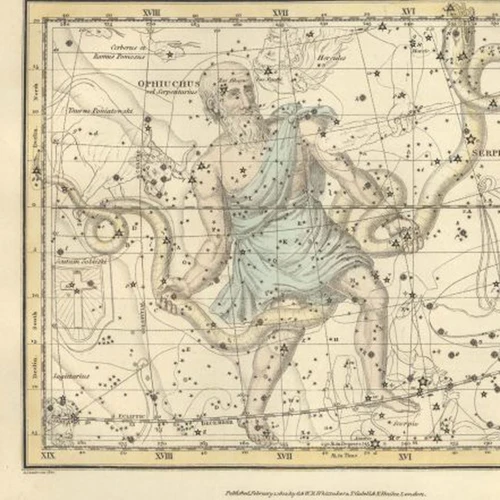
Greek astronomers made significant contributions to the field of astronomy, revolutionizing our understanding of the cosmos. Claudius Ptolemy is renowned for his geocentric model, which proposed that the Earth was the center of the universe, with celestial bodies orbiting around it. Despite its inaccuracies, his model was widely accepted and influenced astronomical thought for centuries. Aristarchus of Samos challenged the prevailing geocentric view with his heliocentric theory, suggesting that the Earth orbits the Sun. Although his theory was met with resistance and largely forgotten, it laid the groundwork for the heliocentric models that would emerge later. Hipparchus made groundbreaking contributions to the measurement of stellar magnitudes and discovered the phenomenon of precession, which explained the shifting positions of stars and constellations over time. These revolutionary contributions by Greek astronomers paved the way for future advancements in understanding the nature of our solar system and the universe.
1. Claudius Ptolemy: Geocentric Model
Claudius Ptolemy, a Greek astronomer and mathematician who lived in Alexandria during the 2nd century, made significant contributions to the field of astronomy with his geocentric model. Ptolemy’s geocentric model proposed that the Earth was the center of the universe, with the celestial bodies, including the Sun, Moon, planets, and stars, orbiting around it in complex epicycles. The model aimed to explain the observed motions of these celestial bodies and accurately predict their future positions. Ptolemy’s work, titled “The Almagest,” consolidated centuries of astronomical knowledge and became the standard reference for astronomy in the Western world for over a millennium. Despite its inaccuracies and complexity, the geocentric model remained widely accepted until the Copernican Revolution in the 16th century. Ptolemy’s geocentric model was a significant step in the development of astronomy, laying the groundwork for future astronomers to challenge and refine our understanding of the universe. [Link: /essential-oils-stress-relief-ophiuchus-sign/]
2. Aristarchus of Samos: Heliocentric Theory
Aristarchus of Samos, a Greek astronomer and mathematician, made groundbreaking contributions to the field by proposing the heliocentric theory, challenging the prevailing geocentric model. He theorized that the Sun, rather than the Earth, was at the center of the universe, with Earth and other planets revolving around it in circular orbits. This revolutionary concept, presented in his work “On the Sizes and Distances of the Sun and Moon,” laid the groundwork for our modern understanding of the solar system. Unfortunately, many of Aristarchus’ original writings were lost over time, and only a few fragments of his work survive today. However, his ideas heavily influenced later astronomers, most notably Nicolaus Copernicus, who would build upon Aristarchus’ heliocentric model centuries later. Aristarchus’ heliocentric theory challenged the established beliefs of his time and opened the door for future astronomical discoveries.
3. Hipparchus: Stellar Magnitudes and Precession
Hipparchus, an influential Greek astronomer who lived in the 2nd century BCE, made significant contributions to our understanding of stellar magnitudes and the phenomenon known as precession. Hipparchus categorized stars based on their brightness, introducing the concept of stellar magnitudes. He divided stars into six magnitude classes, with the first magnitude representing the brightest and the sixth magnitude representing the faintest. This system provided a standard way to quantify the brightness of stars. Additionally, Hipparchus observed that the positions of the stars in the night sky gradually shifted over time. He attributed this motion to a phenomenon called precession, which is the gradual change in the orientation of Earth’s rotational axis. By measuring the positions of stars and the time it took for them to return to a specific position, Hipparchus was able to estimate the rate of precession. His work on stellar magnitudes and precession laid the foundation for future astronomers to study the long-term changes in Earth’s rotation and refine astronomical measurements. Hipparchus’ invaluable contributions to astronomy paved the way for further advancements in the field.
Medieval and Renaissance Developments
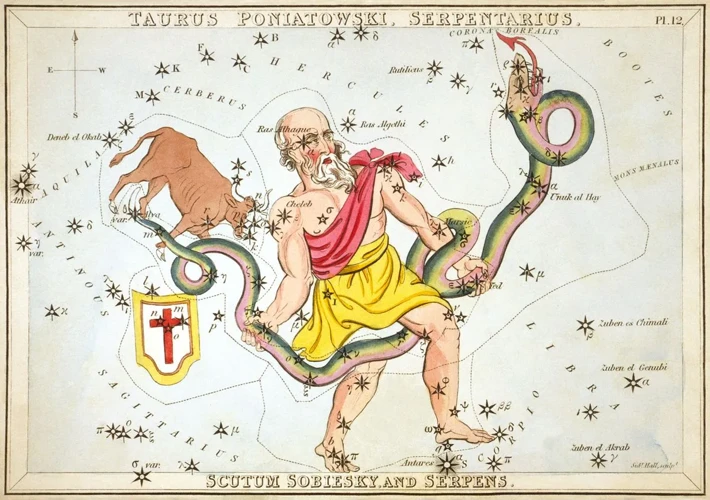
During the medieval and Renaissance periods, astronomy underwent significant developments that built upon the knowledge of previous civilizations. In the Islamic Golden Age, advancements in observational astronomy were made through the establishment of great observatories and the creation of star catalogs. Scholars like Al-Farabi, Al-Battani, and Alhazen contributed to our understanding of celestial movements and devised more accurate methods for determining planetary positions. One of the most influential figures of this time was Nicolaus Copernicus, who challenged the prevailing geocentric model of the universe and proposed a heliocentric model wherein the Sun occupied the center. This groundbreaking idea would pave the way for a new era of scientific exploration. Another key figure was Johannes Kepler, who formulated the laws of planetary motion based on Copernican heliocentrism, establishing a mathematical foundation for describing the movement of celestial bodies. These developments laid the groundwork for a more comprehensive understanding of the universe and set the stage for even greater astronomical discoveries in the future.
1. Islamic Golden Age: Advancements in Observational Astronomy
During the Islamic Golden Age, which spanned from the 8th to the 14th centuries, there were significant advancements in observational astronomy. Islamic astronomers built upon the knowledge inherited from ancient civilizations and made their own groundbreaking contributions.
One of the most prominent astronomers of this era was Al-Battani, also known as Albatenius. He made precise observations of celestial objects, accurately determining their positions and motions. Albatenius also discovered the variations in the Earth’s rotation and the obliquity of the ecliptic, which were crucial in refining astronomical calculations.
Another notable figure was Al-Zarqali, also called Azarchel. He developed sophisticated instruments, such as the astrolabe, for measuring the positions of celestial objects. The astrolabe was instrumental in accurately determining altitudes and azimuths, making it an indispensable tool for astronomers.
The advancements in observational astronomy during this period were also driven by the establishment of observatories. One significant observatory was the Umayyad Mosque in Damascus, where astronomers conducted systematic observations and compiled extensive records. Observatories served as centers of learning and facilitated the exchange of knowledge among astronomers.
Islamic astronomers further expanded their understanding of celestial phenomena through comprehensive studies on planetary motion and celestial spheres. Their meticulous observations and mathematical calculations led to refined models of the heavens, allowing them to accurately predict the movements of celestial bodies.
The Islamic Golden Age also witnessed the translation of numerous astronomical works from Greek, Persian, and other languages into Arabic. This knowledge assimilation contributed to the preservation and dissemination of astronomical knowledge, ensuring its accessibility to future generations.
The advancements made in observational astronomy during the Islamic Golden Age paved the way for future astronomers and significantly influenced the development of astronomy as a scientific discipline. The meticulous observations, innovative instruments, and rich astronomical traditions of this period contributed to a greater understanding of the cosmos.
2. Nicolaus Copernicus: Popularizing Heliocentrism
Nicolaus Copernicus, a Polish astronomer and mathematician, played a pivotal role in revolutionizing our understanding of the solar system with his groundbreaking theory of heliocentrism. Copernicus proposed that the Sun, not the Earth, was the center of the solar system. This concept challenged the widely held belief in the geocentric model, which positioned the Earth as the central point of the universe. Copernicus’s magnum opus, “De Revolutionibus Orbium Coelestium” (On the Revolutions of the Celestial Spheres), published in 1543, presented his heliocentric model of the universe.
Copernicus’s theory was based on careful observation and mathematical calculations. He argued that the seeming motion of celestial bodies across the sky was a result of the Earth’s own rotation on its axis. This revolutionary idea not only shifted the locus of the universe but also explained various astronomical phenomena that couldn’t be adequately accounted for in the geocentric model.
However, Copernicus’s heliocentric model faced significant opposition from both the religious and scientific communities. The Catholic Church, in particular, viewed his theory as contradicting biblical teachings and undermining their authority. Nevertheless, Copernicus’s work marked a turning point in the history of astronomy and laid the foundation for further scientific exploration.
It wasn’t until the advancements made by Galileo Galilei and Johannes Kepler in the following century that Copernicus’s heliocentric model gained wider acceptance. Galileo’s telescopic observations provided empirical evidence supporting Copernicus’s theory, while Kepler’s laws of planetary motion provided the necessary mathematical framework.
Nicolaus Copernicus’s contributions were not only scientific but also cultural. By popularizing heliocentrism, he initiated a paradigm shift that challenged long-standing beliefs and paved the way for the scientific revolution. Copernicus’s work introduced a new way of thinking about the cosmos, marking a crucial step towards our modern understanding of the universe.
3. Johannes Kepler: Laws of Planetary Motion
Johannes Kepler, a German mathematician, astronomer, and astrologer, made significant contributions to the field of astronomy with his groundbreaking work on the laws of planetary motion. In his quest to understand the patterns and movements of the planets, Kepler meticulously analyzed the astronomical observations made by his predecessor, Tycho Brahe. Through extensive calculations and analysis, Kepler formulated three laws that revolutionized our understanding of how celestial bodies move. The first law, known as the law of orbits, states that planets move in elliptical paths with the Sun at one of the foci. This contrasted with the prevailing belief of circular orbits. The second law, known as the law of areas, states that a line that connects a planet to the Sun will sweep out equal areas in equal periods of time, illustrating the variation of a planet’s speed as it moves along its elliptical path. Finally, the third law, known as the law of harmonies, established a mathematical relationship between a planet’s orbital period and its distance from the Sun. Kepler’s laws provided a mathematical foundation for understanding the mechanics of the solar system and paved the way for future advancements in celestial mechanics. [Link: /writing-prompts-ophiuchus-writers/]
The Scientific Revolution and Modern Astronomy
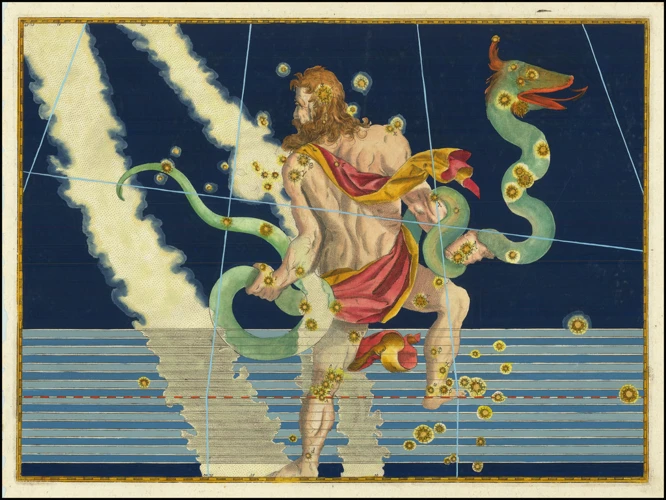
During the Scientific Revolution, astronomy underwent a transformative period that revolutionized our understanding of the universe. Galileo Galilei played a pivotal role with his groundbreaking use of the telescope, observing celestial objects and discovering evidence in support of the heliocentric model proposed by Copernicus. However, his ideas clashed with the prevailing beliefs of the Church, resulting in conflicts and controversy. Another prominent figure of this era was Isaac Newton, whose law of universal gravitation provided a mathematical understanding of celestial mechanics, explaining the motion of planets and other celestial bodies. Newton’s work laid the groundwork for further advancements in astronomy. In the 20th century, Edwin Hubble made a revolutionary discovery – the universe is expanding. Through his observations and the development of the Big Bang Theory, Hubble fundamentally changed our perception of the universe as a static entity. These significant contributions during the Scientific Revolution and the subsequent advancements in modern astronomy have shaped our understanding of the cosmos and paved the way for further exploration and discovery.
1. Galileo Galilei: Telescope Discoveries and Conflict with the Church
Galileo Galilei, renowned as the father of modern observational astronomy, played a pivotal role in shaping our understanding of the universe. His invention and use of the telescope revolutionized the field, allowing him to make groundbreaking discoveries. Through his meticulous observations, Galileo observed celestial bodies that challenged the prevailing geocentric model proposed by Claudius Ptolemy. He observed that Jupiter had its own moons, proving that not all celestial bodies orbited the Earth. Galileo’s observations of Venus also provided evidence for the heliocentric model proposed by Copernicus. However, these discoveries and his promotion of heliocentrism led to a conflict with the Church. The Church, adhering strictly to the geocentric view, condemned Galileo’s findings as heretical and contradictory to biblical teachings. Galileo faced persecution and was eventually put on trial by the Inquisition. In 1633, he was forced to recant his heliocentric beliefs under threat of imprisonment. Despite the conflict with the Church, Galileo’s work laid the foundation for a new era of scientific thought, challenging traditional beliefs and paving the way for the advancement of astronomy.
2. Isaac Newton: Law of Universal Gravitation
Isaac Newton, one of the most influential scientists in history, made significant contributions to the field of astronomy with his groundbreaking work on the law of universal gravitation. Building upon the earlier observations made by Kepler and Galileo, Newton formulated a mathematical framework that explained the mechanics of objects in motion. His law of universal gravitation stated that every particle of matter in the universe attracts every other particle with a force proportional to their masses and inversely proportional to the square of the distance between them. This groundbreaking concept revolutionized our understanding of celestial mechanics and explained the motion of planets, moons, and other celestial bodies. Newton’s profound insights paved the way for a deeper understanding of the structure and dynamics of the universe. His laws of motion and universal gravitation provided a solid foundation for future astronomers and physicists, cementing Newton’s status as one of the most brilliant scientific minds in history.
3. Edwin Hubble: Expanding Universe and the Big Bang Theory
Edwin Hubble, an American astronomer, made groundbreaking discoveries in the early 20th century that forever changed our understanding of the universe. Using the powerful telescope at the Mount Wilson Observatory, Hubble made observations that led to the realization that the universe is not static, but rather expanding. This discovery, known as Hubble’s Law, was based on his observation of galaxies moving away from us at greater speeds the farther they were. This directly challenged the long-held notion of a steady-state universe.
Hubble’s observations also played a pivotal role in supporting the Big Bang Theory. By measuring the redshift of light from distant galaxies, he provided evidence for the expansion of the universe and the idea that it originated from a single, incredibly dense state known as the Big Bang. This revolutionary theory proposed that the universe began approximately 13.8 billion years ago in a tremendous explosion, giving rise to the formation of galaxies, stars, and all matter as we know it.
Hubble’s work not only influenced our understanding of the universe’s structure and origin but also opened up new avenues of research. His observations provided key evidence for the concept of an expanding universe and played a crucial role in the development of cosmology as a scientific discipline. Hubble’s contributions have left an indelible mark on the field of astronomy and continue to inspire scientists around the world to explore the mysteries of our vast universe.
Contemporary Discoveries and Technological Advancements
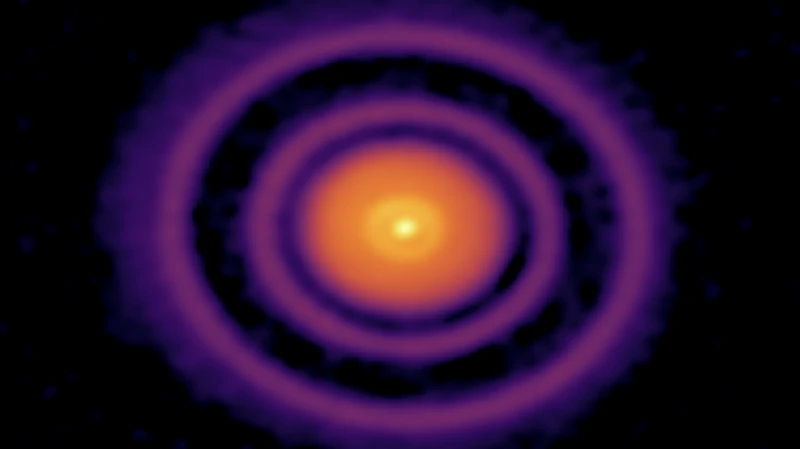
The field of astronomy has witnessed tremendous advancements and breakthroughs in recent times, thanks to contemporary discoveries and technological advancements. Radio astronomy has played a crucial role in unraveling the mysteries of the universe. The discovery of the cosmic microwave background radiation provided evidence for the Big Bang theory and shed light on the early stages of the universe. The launch of the Hubble Space Telescope revolutionized our understanding of the cosmos, capturing stunning images of distant galaxies and uncovering the vastness of the universe. It also helped measure the expansion rate of the universe, contributing to the understanding of dark matter and dark energy. The search for exoplanets has intensified in recent years, with the discovery of thousands of planets outside our solar system. Scientists are keenly studying these exoplanets for signs of habitability and potential life beyond Earth. The advancement of technology, such as powerful telescopes and space probes, continues to push the boundaries of our knowledge and bring us closer to answering fundamental questions about the universe we inhabit.
1. Radio Astronomy and the Discovery of Cosmic Microwave Background
The field of radio astronomy played a pivotal role in one of the most significant discoveries in the study of the universe – the Cosmic Microwave Background (CMB). With the advancement of technology and the use of radio telescopes, scientists were able to detect and study faint radio waves emitted by celestial objects. The CMB, discovered in 1964 by Arno Penzias and Robert Wilson, provided strong evidence for the Big Bang theory. This residual radiation, originating from the early stages of the universe, is a faint glow that permeates all of space. Through radio astronomy, scientists were able to detect and analyze the CMB, confirming predictions and providing essential insights into the origins of the universe. This discovery revolutionized our understanding of cosmology and earned Penzias and Wilson the Nobel Prize in Physics in 1978. The use of radio telescopes continues to be a crucial tool in unraveling the mysteries of the universe, allowing us to explore distant celestial objects, study cosmic phenomena, and gain deeper insights into the nature of our existence.
Key Points:
– Radio astronomy enabled the detection and study of faint radio waves emitted by celestial objects.
– The Cosmic Microwave Background (CMB) was discovered in 1964, providing evidence for the Big Bang theory.
– The CMB is residual radiation from the early stages of the universe and is a faint glow that saturates space.
– Arno Penzias and Robert Wilson’s discovery of the CMB confirmed predictions and revolutionized our understanding of cosmology.
– The use of radio telescopes continues to be essential in exploring the universe, studying cosmic phenomena, and expanding our knowledge of the cosmos.
2. Hubble Space Telescope: Unveiling the Mysteries of the Cosmos
The Hubble Space Telescope has played a pivotal role in revolutionizing our understanding of the cosmos. Launched into orbit in 1990, the Hubble Space Telescope has provided astronomers with unparalleled views of the universe. Equipped with advanced technology and the ability to capture images without the distortion of Earth’s atmosphere, the Hubble has captured breathtaking images of distant galaxies, nebulae, and other celestial objects. Its observations have led to groundbreaking discoveries, such as the measurement of the rate of expansion of the universe, confirming the existence of dark matter and dark energy. The Hubble’s discoveries have also shed light on the formation of stars and galaxies, the existence of black holes, and the exploration of exoplanets. Its ability to capture astonishingly detailed images has not only contributed to scientific research but has also captivated the public’s imagination and sparked a fascination with the wonders of the universe. The Hubble Space Telescope continues to push the boundaries of astronomical exploration, uncovering new mysteries and inspiring awe-inspiring discoveries.
3. Exoplanets and the Search for Other Habitable Worlds
In recent years, the discovery of exoplanets has revolutionized our understanding of the universe and sparked a fervent search for other habitable worlds. Exoplanets are planets that orbit stars other than our Sun, and their existence has opened up a world of possibilities when it comes to the potential for life beyond Earth. Through advancements in technology, such as the Kepler Space Telescope and the Transiting Exoplanet Survey Satellite (TESS), astronomers have been able to detect thousands of exoplanets in distant star systems.
The search for habitable worlds focuses on locating planets that have conditions suitable for life as we know it. This includes factors such as the presence of liquid water, a stable atmosphere, and the right distance from their star to maintain a moderate temperature. Scientists are particularly interested in finding exoplanets within the “habitable zone,” also known as the Goldilocks zone, where conditions may be just right to support the existence of liquid water and potentially life.
One significant discovery in the search for habitable worlds is the exoplanet named Kepler-452b. Located about 1,400 light-years away from Earth, this planet is often referred to as Earth’s “cousin” due to its similarities in size and orbit to our own planet. While it is not yet known if Kepler-452b harbors life, its discovery has fueled excitement and furthered our understanding of what an Earth-like exoplanet could potentially look like.
The exploration of exoplanets and the search for other habitable worlds continue to captivate scientists worldwide. With ongoing advancements in technology and the launch of future space missions, such as the upcoming James Webb Space Telescope, astronomers are optimistic about the possibility of finding more Earth-like exoplanets and expanding our knowledge of the potential for life beyond our own planet.
Conclusion
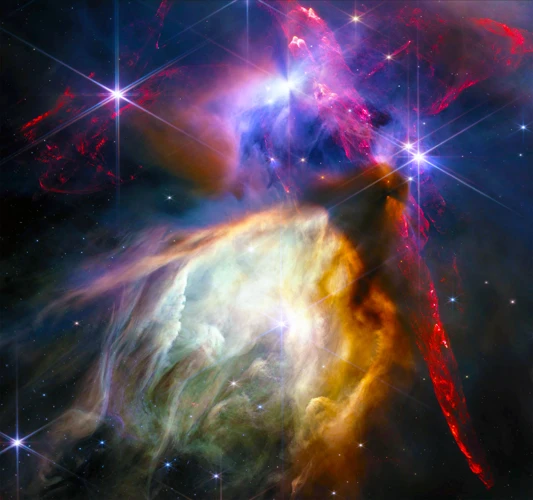
In , it is evident that the history of astronomy has been a fascinating journey of discovery and scientific advancement. From the observations of ancient civilizations like Mesopotamia, Egypt, and the Mayans, to the revolutionary contributions of Greek astronomers like Claudius Ptolemy, Aristarchus of Samos, and Hipparchus, each era brought new insights into our understanding of the cosmos. The medieval and Renaissance periods saw significant developments in observational astronomy and the popularization of heliocentrism by Nicolaus Copernicus. Johannes Kepler’s laws of planetary motion further revolutionized our understanding of celestial mechanics. The scientific revolution led to groundbreaking discoveries by Galileo Galilei, Isaac Newton, and Edwin Hubble, expanding our knowledge of the universe. This journey through the history of astronomy culminates in contemporary discoveries and technological advancements, such as the exploration of cosmic microwave background, the Hubble Space Telescope unveiling cosmic mysteries, and the search for exoplanets and potentially habitable worlds. The evolution of astronomy demonstrates the relentless pursuit of knowledge and the human desire to unravel the mysteries of the cosmos. As we reflect upon the progress made over centuries, it is clear that astronomy will continue to captivate us and unlock new cosmic secrets for generations to come.
Frequently Asked Questions
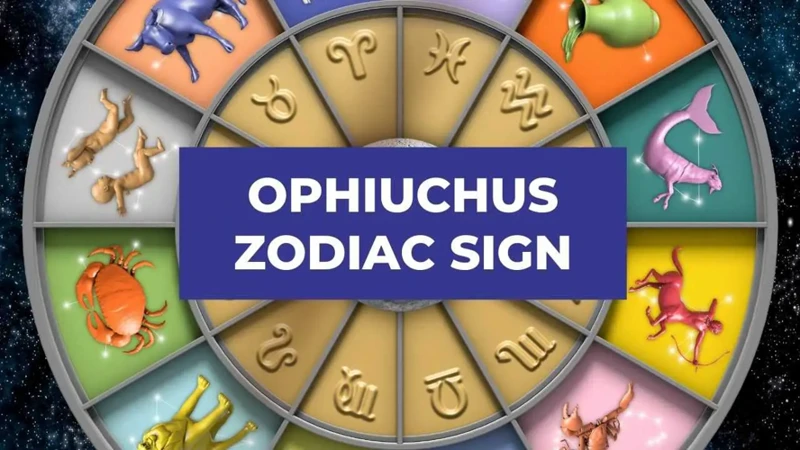
1. How did ancient civilizations track the movements of celestial objects?
Ancient civilizations tracked the movements of celestial objects through meticulous observations. They recorded the positions of stars, planets, and other celestial bodies at different times, allowing them to identify patterns and predict their movements.
2. Why was astronomy closely linked with religion in Ancient Egypt?
In Ancient Egypt, astronomy was closely linked with religion because they believed that the gods and the afterlife were associated with the stars and planets. The alignment of the pyramids with certain celestial bodies served as a way to honor and connect with the divine.
3. How did the Mayans make advanced astronomical calculations?
The Mayans were skilled mathematicians and astronomers who developed sophisticated mathematical systems. They used these systems to make advanced astronomical calculations, allowing them to accurately predict celestial events such as eclipses and align their activities with the cosmic cycles.
4. Who proposed the geocentric model of the universe?
The geocentric model, which placed the Earth at the center of the universe, was proposed by Claudius Ptolemy. This model was widely accepted in ancient Greece and remained the dominant cosmological view for centuries.
5. What was the heliocentric theory proposed by Aristarchus of Samos?
Aristarchus of Samos proposed the heliocentric theory, which suggested that the Sun, rather than the Earth, was at the center of the universe. This revolutionary idea challenged the prevailing geocentric model but was not widely accepted at the time.
6. What were Hipparchus’s contributions to astronomy?
Hipparchus made significant contributions to astronomy, including the development of a system to classify the brightness of stars (stellar magnitudes) and the discovery of the phenomenon known as precession, which is the gradual shift of Earth’s rotational axis over time.
7. What advancements in observational astronomy were made during the Islamic Golden Age?
During the Islamic Golden Age, advancements in observational astronomy were made. Islamic astronomers made precise observations of celestial bodies, developed sophisticated instruments, and created star catalogs that improved our understanding of the universe.
8. How did Nicolaus Copernicus popularize the heliocentric model?
Nicolaus Copernicus published his work “On the Revolutions of the Celestial Spheres,” which presented the heliocentric model in detail. This groundbreaking publication challenged the geocentric model and contributed to the rise of the heliocentric view.
9. What were Johannes Kepler’s laws of planetary motion?
Johannes Kepler’s laws of planetary motion provided a mathematical description of how planets move around the Sun. These laws state that planets move in elliptical orbits, sweep equal areas in equal times, and the square of the orbital period is proportional to the cube of the average distance from the Sun.
10. How did Galileo Galilei’s telescope discoveries conflict with the Church?
Galileo Galilei’s observations through his telescope, such as the phases of Venus and the moons of Jupiter, contradicted the geocentric model supported by the Church at the time. This conflict between his scientific findings and religious beliefs led to scrutiny and ultimately his persecution by the Church.
References
Frequently Asked Questions

1. Can astrology be considered a part of ancient astronomy?
Astrology and astronomy were closely intertwined in ancient civilizations. While astronomy focused on the scientific study of celestial objects and their movements, astrology was the belief that celestial bodies had an influence on human affairs. However, as scientific methods developed, astronomy and astrology became distinct disciplines.
2. What were the main contributions of the Mesopotamians to astronomy?
The Mesopotamians, particularly the Babylonians, made significant contributions to astronomy. They developed a sophisticated system of observing and recording celestial events, such as the movements and positions of planets and stars. They also created a calendar based on lunar cycles and accurately predicted eclipses.
3. How did ancient Egyptians link astronomy to their religion?
The ancient Egyptians believed that the movements of celestial bodies were connected to their gods and the afterlife. They associated specific deities with different celestial bodies and used astronomical knowledge to align their temples and monuments with cosmic events, such as solstices and equinoxes.
4. What were the Mayans known for in terms of astronomical calculations?
The Mayans were skilled astronomers who developed an advanced system for predicting celestial events, including eclipses, planetary motions, and the movements of Venus. They also created a complex calendar that integrated astronomical observations with their religious and agricultural practices.
5. How did Claudius Ptolemy contribute to astronomy?
Claudius Ptolemy, an ancient Greek astronomer, proposed a geocentric model of the universe, where Earth was believed to be at the center. His work, “Almagest,” provided a comprehensive description of celestial motions and served as a standard reference for astronomers for over a thousand years.
6. What was Aristarchus of Samos’ groundbreaking theory?
Aristarchus of Samos proposed a heliocentric theory, suggesting that the Sun, not the Earth, was at the center of the universe. Although his theory was not widely accepted during his time, it laid the foundation for future astronomers to explore the idea of a Sun-centered system.
7. How did Johannes Kepler contribute to our understanding of planetary motion?
Johannes Kepler, a German astronomer, formulated three laws of planetary motion. His laws described the elliptical orbits of planets around the Sun, the speed of planets at different points in their orbits, and the relationship between a planet’s distance from the Sun and the duration of its orbit.
8. What were Galileo Galilei’s significant telescope discoveries?
Galileo Galilei made numerous important discoveries using his telescope. He observed the phases of Venus, the moons of Jupiter, sunspots, and the rough, cratered surface of the Moon. These observations supported the heliocentric model and challenged the prevailing geocentric belief at the time.
9. How did Isaac Newton revolutionize our understanding of gravity?
Isaac Newton formulated the law of universal gravitation, stating that all objects in the universe attract each other with a force proportional to their masses and inversely proportional to the square of the distance between them. This law explained not only the motion of celestial bodies but also everyday phenomena on Earth.
10. What did the Hubble Space Telescope uncover about the universe?
The Hubble Space Telescope provided unprecedented views of distant galaxies, stars, and nebulae. It revealed the vastness of the universe, the existence of black holes, the age of the universe, and evidence supporting the Big Bang theory. It continues to contribute to our understanding of cosmic evolution.
References
- Astronomy – Ancient, Celestial, Observations
- A History of Astrometry – Part I Mapping the Sky From Ancient …
- 7 Ancient Cultures and How They Shaped Astronomy






